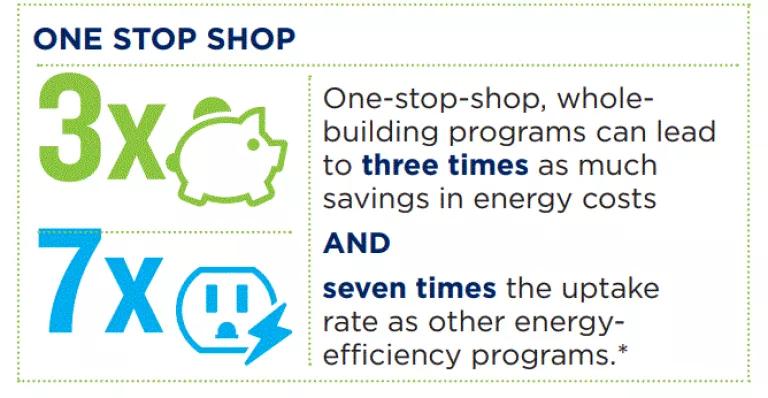Our Energy Programs Need an Efficiency Upgrade, Too

There’s a hidden layer of inefficiency when it comes to reducing energy waste in lower-income rental apartments to make them healthier and more affordable. But it doesn’t have to be that way.
Across America, administrative burdens and fragmented utility programs with unpredictable start-and-stop cycles often leave even the most energy-conscious building owners and residents frustrated with too many options, confusing qualification criteria, and mountains of paperwork.
In other words, becoming efficient… is inefficient… sometimes.
Energy Efficiency for All, a national initiative to improve efficiency programs for lower-income residents, recently released a fact sheet documenting how comprehensive one-stop-shop energy efficiency programs can cut the waste—enabling residents and affordable housing owners to save more on bills and enjoy the increased health and comfort that efficiency upgrades provide.
With a single universal intake application, technical assistance, and streamlined access to funding resources, comprehensive one-stop-shops also provide coordination across regional electricity, gas, and water efficiency programs to maximize savings for renters and owners alike.
How a one-stop-shop can help
Our new fact sheet details how one-stop-shop best practices can overcome longtime barriers that have plagued program implementers, utilities, and customers for decades. It also outlines specific program elements that define truly comprehensive and successful one-stop-shop offerings from other commonplace efficiency offerings.
The fact sheet profiles exemplary one-stop-shop style efficiency programs that feature a single point of contact, or SPOC, for managing energy efficiency upgrades from start to finish. Just like stalwart Mr. Spock of the Starship Enterprise, SPOCs help multifamily affordable housing owners navigate the complex universe of energy efficiency offerings—everything from audits, to project development and approval, contract hiring, and quality assurance.

With a steady hand at the helm, building owners can trust that SPOCs will help coordinate and deliver energy efficiency measures that make good sense for their buildings and pull together the data, program funding, and contractors to make it happen—as opposed to sending customers off with a referral and hazy map to navigate the far reaches of the energy and water efficiency galaxy.
Programs that are leading the way

Programs across the country can learn much from a few of these trailblazing one-stop-shop offerings that feature higher participation rates and greater savings:
- Chicago’s multifamily energy efficiency program, in partnership with the Community Investment Corporation, has streamlined efficiency funding to achieve 20 to 30 percent energy and bill savings in more than 27,000 affordable apartment units as of last year—savings that wouldn’t have been possible without this comprehensive approach.
- Massachusetts operates the Low-Income Multifamily Retrofit Program through the Low-Income Energy Affordability Network (LEAN), which averages 20 percent in energy and bill savings. It handles the full range of tasks – from project development, to contracting and quality assurance, to benchmarking (quantifying and verifying energy savings for owners).
- The Energize Delaware initiative partners with trusted nonprofit groups to improve community outreach efforts and takes a comprehensive whole-building approach to capture all energy savings opportunities in a property. Even with excellent program design, community trust and relationships are central for customer demand and successful outcomes.
- California’s Low-Income Weatherization program has saved a whopping 44 percent of properties’ energy usage on average, thanks to integrated energy efficiency, solar panels and solar thermal upgrades.
Boldly go where these programs have gone
Other programs are actively adopting specific one-stop-shop program features. In California, utilities such as Pacific Gas & Electric, which administer the state’s largest low-income efficiency program—the Energy Savings Assistance Program, recently launched SPOC services for owners in multifamily affordable housing.
And in Los Angeles, LADWP recently allocated $100 million in energy efficiency services for renters in multifamily housing, and is now actively selecting the type of program designs it will support with this funding. Hopefully, they too will adopt elements of the one-stop-shop approach.
For more information about how to support, create, or enroll in comprehensive one-stop-shop programs, we urge policymakers, utilities, advocates, building owners, and tenants to read our fact sheet. Though these groups may have different priorities, all will benefit from the increased energy and bill savings—as well as the higher program enrollment—comprehensive one-stop-shop designs provide.
This blog was co-written by Emma Tome during her fellowship at NRDC



